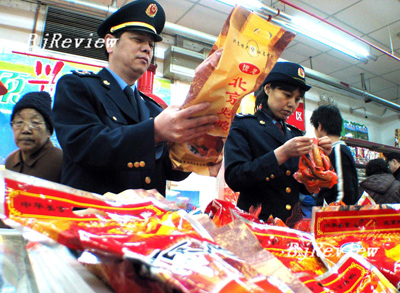
Xu Heyu, General Manager of a Hong Kong-invested porcelain development company in southern China, was always confident of the quality of his products. Now he is more than a little puzzled, facing a stockpile of more than 170,000 pots that no one wants. Xu's company produces about 500,000 porcelain pots every year, mostly for export, which had been popular in the Japanese market until Japanese media reported in May, that the products might contain quantities of lead higher than the safety standards.
China's General Administration of Quality Supervision, Inspection and Quarantine (AQSIQ) conducted in-field investigations and tests in the ensuing weeks and announced on July 20 that the lead content of the targeted ceramic pots was well below the safety standards of both Japan and China. The finding has been reaffirmed by separate tests conducted by three professional Japanese testing organizations.
Although there is no recall for these ceramic pots, the fallout has been disastrous for Chinese exporters, who have lost orders worth 8 million yuan since Japanese media published the unfounded accusation, according to a Xinhua News Agency report on July 21.
Unfortunately, Xu's company is not the only innocent victim of the latest global wave of questioning the quality and safety of Chinese products.
In June, the New Jersey-based Foreign Tire Sales Inc. (FTS) in the United States blamed the tires made by China's Hangzhou Chongce Rubber Company, the country's second largest tire manufacturer, for a van crash in Philadelphia last August. And on June 26, it requested the U.S. National Highway Traffic Safety Administration (NHTSA) help recall 450,000 Zhongce-made tires, citing the tires lacked a gum strip used to prevent tread separation, a critical component for this type of tire.
But Zhongce told China Daily that adding the gum strip is not included in the U.S. Motor Vehicle Safety Standards or in its contract with FTS. Further, sample tests by AQSIQ proved the tires are qualified to sell in the United States, the newspaper reported.
In a latest FTS report published on the NHTSA website, the importer admitted that it could not determine if the absence of the strip caused or contributed to the accident. FTS noted the van was equipped with three Hangzhou-made tires of one size and one Michelin tire of another size.
A global concern
In spite of the fact that China is not the country with the worst record when it comes to exporting sub-standard food, the country is indeed facing growing global concern over the quality and safety of its export products. This follows recent recalls and controls imposed on Chinese goods by foreign, mainly American, regulators, which involved fish contaminated with drugs, unsafe additives or tainted with salmonella, unhygienic frozen crab meat and toy trains colored with lead paint.
According to statistics of the U.S. Food and Drug Administration (FDA), between June 2006 and June 2007, China had a total of 1,368 shipments of food denied entry by the FDA, compared with India, which had 1,763 food shipments refused, and Mexico, 1,480, The New York Times reported on July 12.
And on July 20, the Japanese Government released its annual report on inspection results on imported food in 2006. Although exports from China were most frequently inspected, 99.42 percent of surveyed Chinese food met safety standards, higher than its American and EU counterparts.
| 